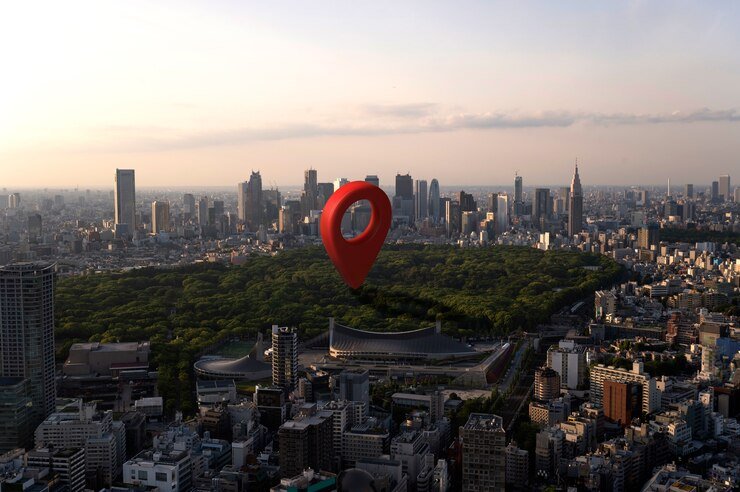Introduction to Geo-Fencing
Imagine sending a special offer to customers the moment they step into your store or notifying them about an event just as they pass by your location. This is the magic of geo-fence, a technology that has transformed how businesses interact with their audience in real-time. As we navigate through our daily lives, mobile devices are constantly collecting data, and savvy entrepreneurs are using this information to create tailored experiences for potential customers. If you’re looking to engage your audience more effectively and drive foot traffic to your business, understanding geo-fencing could be the game-changer you’ve been searching for. Let’s dive deeper into what geo-fencing is and how you can harness its power for your brand!
Benefits of Using Geo-Fencing for Your Business
Geo-fencing offers a range of advantages that can significantly enhance your business strategy. One major benefit is targeted marketing. By setting up virtual boundaries, you can engage customers who are physically near your location, delivering timely promotions or updates.
Another plus is improved customer engagement. Personalized messages sent to users’ smartphones create a more interactive experience, fostering brand loyalty and encouraging repeat visits.
Additionally, geo-fencing provides valuable data insights. You can analyze foot traffic patterns and user behavior in real-time, helping refine marketing strategies based on actual consumer habits.
Cost-effectiveness also plays a role; digital ads through geo-fencing often incur lower costs compared to traditional methods while reaching the right audience effectively.
It helps businesses stand out in competitive markets by creating unique offerings that resonate with local consumers seeking convenience and relevance.
Understanding the Technology and How It Works
Geo-fencing technology relies heavily on GPS, RFID, Wi-Fi, and cellular location services. By creating a virtual boundary around a specific geographic area, businesses can trigger actions when customers enter or exit that zone.
When a user enables location services on their device, the geo-fence can track their movements in real-time. This data allows companies to send targeted notifications or advertisements directly to potential customers.
Integration with mobile applications is key for effective implementation. As users cross into defined areas, they receive alerts about deals or promotions tailored just for them.
The precision of this technology varies based on how it’s set up and the hardware used. Businesses can choose between tight boundaries for more localized outreach or broader ones for wider audience engagement. Understanding these nuances helps refine strategies and maximize impact.
Steps to Setting Up a Geo-Fence for Your Business
Setting up a geo-fence for your business is straightforward. Start by choosing the right platform to manage your geo-fencing campaigns. Look for tools that integrate well with your existing systems.
Next, define the geographical area you want to target. This could be as small as a city block or as large as an entire region. Precision matters here.
Once you’ve mapped out your area, create compelling content for notifications or ads that will engage users when they enter the fence. Think about what message will resonate best with them in that specific location.
Afterward, set parameters like timing and frequency of alerts to avoid overwhelming potential customers.
Test everything before launching your campaign. Monitor performance metrics closely and make adjustments based on user engagement and feedback to ensure success over time.
Best Practices for Creating an Effective Geo-Fence
Creating an effective geo-fence requires careful planning and strategy. Start by defining your objectives clearly. Know what you want to achieve—whether it’s increasing foot traffic, driving online sales, or promoting a special event.
Next, choose the right location for your geo-fence. Consider areas where your target audience frequents. This ensures that notifications reach potential customers when they are most likely to engage with them.
Keep the size of the geo-fence appropriate. Too large may dilute messaging; too small might miss opportunities. Testing different sizes can help identify what works best.
Timing is also crucial—schedule notifications during peak times for maximum impact.
Personalize messages for better engagement. Tailoring content based on customer preferences makes interactions more relevant and enticing, leading to higher conversion rates.
Examples of Successful Businesses Using Geo-Fencing
Many well-known brands have harnessed the power of geo-fencing to enhance their marketing strategies. Starbucks, for example, uses geo-fencing to send enticing promotions directly to customers’ smartphones when they approach a store. This targeted approach not only drives foot traffic but also boosts customer engagement.
Retail giants like Walmart implement geo-fencing to optimize inventory management and improve shopper experiences. By tracking customer movements within their stores, they can ensure that popular items are always in stock.
Even events and festivals utilize this technology. Coachella has employed geo-fences to notify attendees about schedule changes or location-specific activities, enhancing overall visitor satisfaction.
These examples illustrate how businesses across various industries leverage geo-fencing effectively, creating tailored experiences that resonate with consumers right where they are.
Potential Challenges and How to Overcome Them
Implementing a geo-fence can come with its own set of challenges. One common issue is the accuracy of location data. If your geo-fence isn’t correctly calibrated, you might miss reaching potential customers or send notifications to the wrong audience.
Privacy concerns also play a significant role in how users perceive geo-targeted campaigns. Transparency about data collection and usage is essential. Clearly communicate how their information will be used, which helps build trust.
Technical difficulties may arise as well. Ensure that you have reliable software and hardware solutions in place to prevent disruptions in service.
It’s crucial to continuously analyze performance metrics. This allows for adjustments based on user interactions and feedback, making your campaign more effective over time. Staying adaptable will help navigate these hurdles smoothly while maximizing engagement opportunities.
What is a Geo-Fence?
A geo-fence is a virtual boundary defined by GPS or RFID technology. It creates a digital perimeter around a specific location. Businesses use this technology to trigger alerts when customers enter or exit the designated area.
Imagine walking into your favorite coffee shop and receiving an instant coupon on your phone. That’s geo-fencing in action, connecting businesses with potential customers in real-time.
This tool leverages mobile devices, making it possible to engage users based on their physical proximity to a business. By setting up these invisible fences, companies can tailor marketing messages directly to individuals who are most likely to respond.
Geo-fences can vary in size from just a few feet to several miles wide. The flexibility allows businesses of all types—retailers, restaurants, and service providers—to enhance customer interaction effectively.
Targeting the Right Audience with Your Geo-Fence
To maximize the effectiveness of your geo-fence, it’s crucial to target the right audience. Start by defining who your ideal customers are. Consider factors like age, interests, and purchasing behavior.
Once you have a clear profile, analyze location data to determine where these potential customers spend their time. For example, if your business is a coffee shop, targeting areas near offices or universities can yield better results.
Utilizing demographic insights can enhance this process. Tailoring messages based on local events or community happenings makes your offers more relevant and appealing.
Don’t forget about seasonal trends as well. Adjusting your geo-fencing strategy during holidays or special occasions allows you to reach those who may be more inclined to engage with your brand at specific times of the year.
Engaging with the right audience means crafting personalized experiences that resonate deeply within their everyday routines.
Tips for Effective Geo-Fencing Campaigns
To run an effective geo-fencing campaign, start by defining your goals. Are you aiming to increase foot traffic or boost online engagement? Clear objectives guide the rest of your strategy.
Next, refine your target audience. Use demographic and behavioral data to create specific segments. The more tailored your message is, the better it resonates with potential customers.
Timing plays a crucial role as well. Consider when your audience is most active in their location. Sending notifications during peak hours can significantly enhance response rates.
Don’t forget about testing and optimization. Monitor performance metrics closely, and adjust parameters based on real-time feedback. Small tweaks can lead to substantial improvements in engagement.
Ensure that your call-to-action is compelling and straightforward. A clear offer encourages users to take immediate action, making them more likely to visit or interact with your business right away.
Common Mistakes to Avoid When Using a Geo-Fence
One common mistake businesses make is setting a geo-fence that’s too large. A broad area can dilute your messages, making them less relevant to those receiving them.
Another pitfall is failing to update the geo-fencing parameters regularly. Customer behaviors and locations change over time, so staying current ensures you reach the right audience effectively.
Ignoring the data analytics from your campaigns also hinders success. Tracking engagement metrics helps refine strategies and improve future outreach.
Many companies overlook their messaging as well. Generic promotions may not resonate with users who are within a specific location for unique reasons.
Neglecting customer privacy concerns can lead to distrust. Always ensure compliance with regulations and be transparent about how you use location data to maintain credibility in your brand.
Conclusion
Geo-fencing is a powerful tool for businesses looking to engage customers in real-time and enhance their marketing strategies. By creating virtual boundaries, you can deliver targeted messages that resonate with your audience right where they are. Understanding the benefits, technology, and best practices of geo-fencing will equip you to implement this strategy effectively.
As you set up your geo-fence, remember the importance of targeting the right audience. Focus on crafting campaigns that not only attract attention but also encourage conversions. Be mindful of common pitfalls, such as over-saturation or irrelevant messaging.
With careful planning and execution, your business can harness the full potential of geo-fencing to drive engagement and sales. Embrace this innovative approach to connect with customers more personally while standing out in a competitive marketplace.








